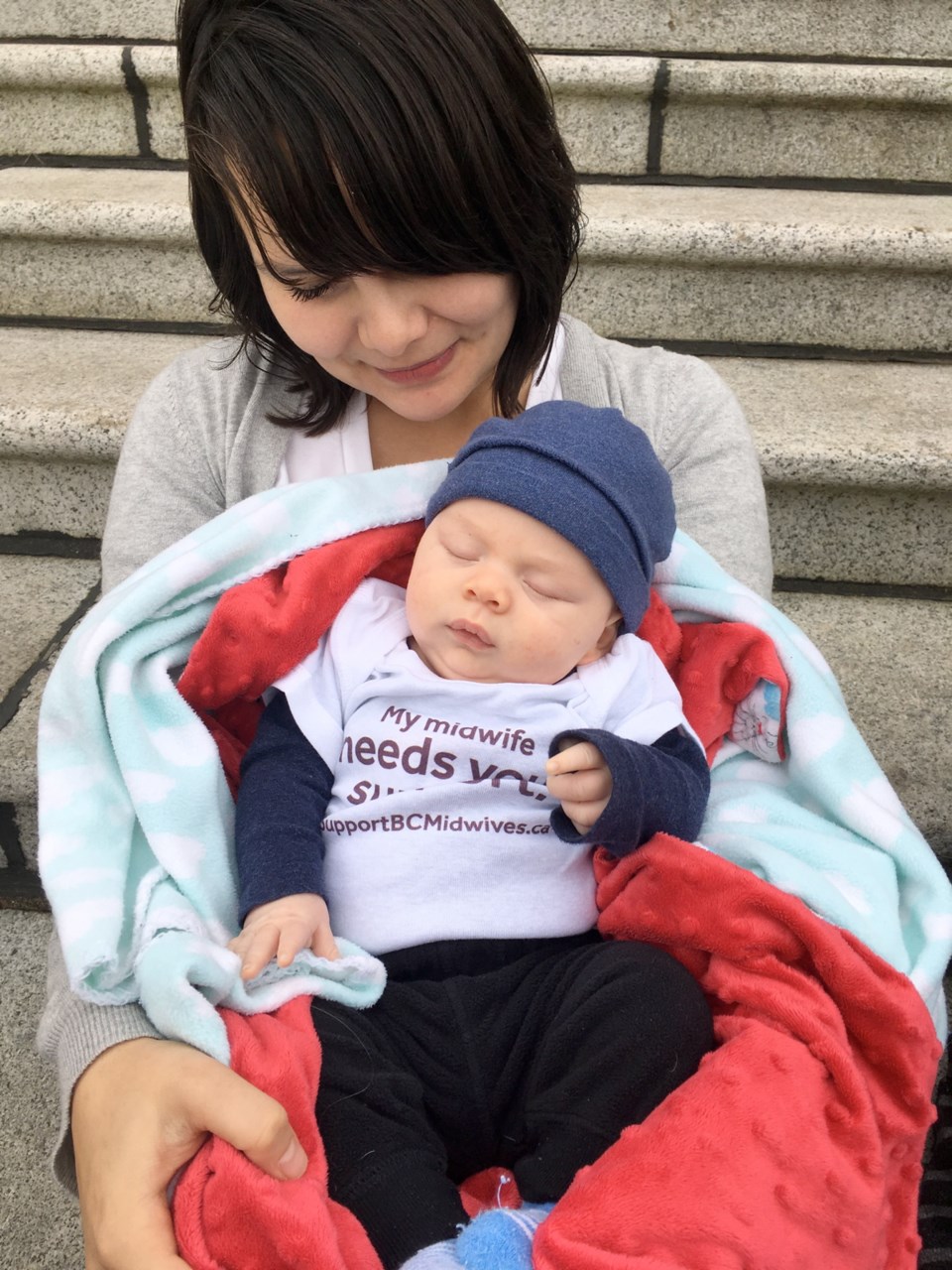Mothers embracing swaddled babes stood on the stairs of the B.C. legislature on Thursday to call on the province to fund more midwives.
Ganga Jolicoeur, CEO of the Midwives Association of B.C., and Alix Bacon, president of the Canadian Association of Midwives, rallied for increased funding to close the “maternity care gap” as fewer doctors practise obstetrics.
That gap is only going to grow, Bacon said, as the number of births in the province is expected to reach more than 50,000 annually by 2025.
“With growing demand and wait-lists at many practices today, we are stretched thin and need more resources to keep up with the needs of British Columbia’s growing families,” she said.
The association will enter contract talks with the province in early 2019. It is calling for more funding and supports (including locums for rural midwives) and scope (up to one year of post-partum care, up from six weeks), and to further integrate into health authorities and the province’s new primary-care networks.
“Greater investment means midwives can continue to enable British Columbians to birth their babies closer to home,” Jolicoeur said.
Registered midwives are fully funded under B.C.’s health-care system and have expertise in low-risk, low-intervention births. They provide care from early pregnancy through labour and birth to six weeks afterward.
Education and training consists of four-year program at the University of B.C.’s school of midwifery, part of the faculty of medicine.
Victoria has the highest percentage of midwife-assisted births in Canada at 35 per cent, compared with 23 per cent in the province as a whole.
There are 288 midwives practising in the province — including about 70 working on Vancouver Island — assisting in more than 10,000 births a year.
“There are communities that have no access to a midwife’s care,” Bacon said. On Vancouver Island, residents in Port Hardy and Port McNeill are asking for the service. “And then there are communities that have no access to maternity care at all,” she said, referencing Tofino.
Teejay Keepence’s obstetricians didn’t make it for the delivery of her first two children, who were instead delivered by nurses in Victoria General Hospital.
“The one-on-one personal care [of a midwife] is incomparable to that of an obstetrician,” Keepence said, adding that a midwife gives a “personal connection of someone who wants to spend your pregnancy with you and cheer you on in the hardest time of your entire life.” She rocked in her arms infant son Tommy Dennis, born at Victoria General Hospital on Sept. 28.
A midwife shows up at your house, shows up at the birth, and after the baby is born, the midwife is there for all the firsts in the initial six weeks — “the first latch, the first cries, and she lets you text her when you need to ask: ‘Is this OK?’ ” Keepence said.
Sasha Seguin said the midwife support during the birth of daughter Sophie in September at VGH “was amazing.”
“You felt empowered that you could trust your own instincts but you also had her expert advice,” Seguin said. “But during labour it was just so clear … just having someone you’ve been working with so intensely for nine months.”
The association estimates that midwives have saved the health-care system about $145 million since 2011 through shorter or no hospital stays, for instance.
Dr. Michael C. Klein, professor emeritus of family practice at the University of B.C. and senior scientist emeritus at the B.C. Children’s Hospital Research Institute, said many women who want a midwife cannot get one.
“Increasing the number of midwives, expanding their scope of practice, and developing new funding models that will encourage collaboration with family physicians and other health-care providers will help close the maternity care gap and lead to better health outcomes for newborns, moms and families,” he said.
Comox’s Dr. Sara Sandwith said midwifery has pushed the entire medical system to focus on normalizing birth and respecting patients’ decisions.
“I am grateful to be practising in an era when midwives and physicians can collaborate and learn from one another to provide the best possible care for our patients and families.”



